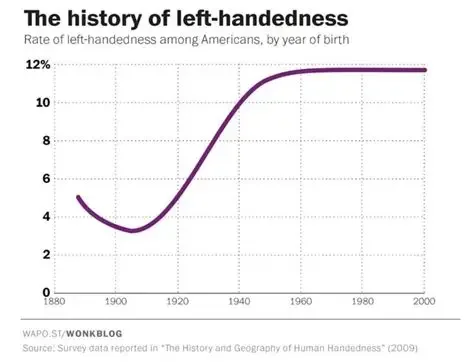“We Didn’t Have Autism or ADHD in My Day”: The Increase in Autism and ADHD Diagnoses
Last week, a superb article was published in The Guardian by Gina Rippon titled ‘Why the antagonism over the rise in autism diagnoses? It’s actually good news’. I am honoured that Girl Unmasked was mentioned. Rippon writes that “a wave of powerful personal testimonies from late-diagnosed autistic women has been a key driver in the recent awareness of autism’s missing females. The subtitle of Emily Katy’s Girl Unmasked: How Uncovering My Autism Saved My Life could stand as a generic summary of their stories…” The article goes on to outline why there has been a rise in diagnoses and how “an autism diagnosis is almost universally seen as a gateway to understanding, of positive benefit to self-identity and self-esteem” and “not something that should be rationed or withheld.” The article got me thinking about those comments. The ones like “we didn’t have autism or ADHD in my day.” Because people still say this. A lot.
Autistic people and people with ADHD have always existed. History documents traits resembling both conditions. Hippocrates ‘the father of modern medicine’ (460-375 BC) described patients who could not focus and had fast reactions. He believed this was an “overbalance of fire over water”. Victor of Aveyron was a child found aged 9 in 1794. He was non-speaking, rocked back and forth and grinded his teeth. It has recently been suggested that he may have been autistic. And, unfortunately, mental asylums would have been filled with neurodivergent people who didn’t quite fit in to society. Just because the diagnoses didn’t exist back then, doesn’t mean autistic and ADHD people weren’t there.
Autism and ADHD are relatively new diagnoses. Autism was only introduced into the Diagnostic and Statistical Manual in 1980 as ‘Infantile Autism’ and ADHD in 1968 as ‘Hyperkinetic Reaction of Childhood’. The National Institute of Health and Care Excellence (NICE) only recognised childhood ADHD in 2000, and ADHD in adults in 2008, which then enabled more people in the UK to be diagnosed. In 2009, less than 50% of local authorities had adult autism diagnosis services, but by 2019 this was 93% (NAS, 2019), allowing greater access to autism assessments after the Autism Act of 2009 made it a statutory duty for local authorities to provide adult autism diagnostic services.
If you’re still not convinced, take a look at the history of left-handedness.
Left-handedness didn’t suddenly start to occur in 1910-1920. It had always been there, just not recognised.
The same is true for autism and ADHD, and particularly true for multiply marginalised autistic and ADHD people. This is because diagnostic criteria were developed based on studies of largely cisgender male, white participants, meaning that autistic girls, women, gender non-conforming people and people of colour have historically been missed. Now, more marginalised autistic/ADHD people are starting to be recognised. Which is a good thing.
Furthermore, until 2013 autism was listed as an exclusion criteria for ADHD in the DSM-IV (Diagnostic and Statistical Manual), meaning that they couldn’t be diagnosed together in the same person. But we know the co-occurrence rates of autism and ADHD are high - between 50-70% of autistic people are thought to also have ADHD (Hours et al., 2022). It’s only since 2013 that all of these people would have been able to be correctly recognised as having both!
Whilst it seems like a lot more people are being diagnosed in recent years, the reality is that only 1 in 9 people with ADHD in the UK actually have a diagnosis of ADHD (ADHD UK, 2025) and there are huge numbers of undiagnosed autistic adults (Fletcher, 2023). We are still playing catch up on all of those who have been missed.
Hopefully some of these facts will empower you to argue against those comments of ‘back in my day, we didn’t have autism or ADHD’ next time they arise!
If you’d like to read The Guardian article, you can here. Or if you’d like to read Girl Unmasked, you can find all the links below!
All my love, Emily x
References
ADHD UK. (undated). The history of ADHD: ADHD over the years. Retrieved July 2, 2023 from https://adhduk.co.uk/the-history-of-adhd/
ADHD UK. (2025). ADHD diagnosis rate in the UK. https://adhduk.co.uk/adhd-diagnosis-rate-uk/
Fletcher, A. (2023). Under diagnosis of autism in England: a population-based study. https://www.autism.org.uk/advice-and-guidance/professional-practice/under-diagnosis-of-autism-in-england
Hours, C., Recasens, C. & Baleyte, J. (2022). ASD and ADHD comorbidity: what are we talking about? https://doi.org/10.3389/fpsyt.2022.837424
Martinez-Badia, J. & Martinez-Raga, J. (2015). Who says this is a modern disorder? The early history of attention deficit hyperactivity disorder. World Journal of Psychiatry, 5(4), 379-386. https://doi.org/10.5498/wjp.v5.j4.379
National Autistic Society. (2019). The Autism Act, 10 years on. https://s4.chorus-mk.thirdlight.com/file/1573224908/61601577629/width=-1/height=-1/format=-1/fit=scale/t=443899/e=never/k=a402a7d4/nas_appga_report.pdf
GIRL UNMASKED (The Sunday Times Bestseller) is available to order from Amazon and all major bookstores as a hardback, paperback, audiobook and ebook.
linktr.ee/itsemilykaty
If you would like to support my blog on a one-off or monthly basis, you can here: https://buymeacoffee.com/itsemilykaty
If you have a spare moment to vote for me as ITV’s Book bCreator of the Year, I’d be so grateful! You can vote here (select ‘creator shortlist’, then scroll to the Book bCreator section to find me!).

